
Enterprise Resource Planning (ERP) systems manage core processes such as HR, finance, sales, inventory, and more. They consolidate multiple subsystems into a single platform, streamlining data flow. The more user-friendly a system appears, the more challenging its implementation can be. Multiple reports indicate that nearly 70% of ERP implementations fail to achieve their initial goals, and over 20% fail completely. This underscores the growing need for thorough ERP testing to prevent post-deployment problems that could harm organizational productivity and budgets over the long term. Software testing company should explore innovative tools and methods to conduct comprehensive ERP testing, ensuring a smooth transition for organizations implementing these systems.
In this blog, you’ll learn about ERP testing, its advantages, the implementation process and associated challenges, the types of ERP testing, and best practices. So let’s begin.
1. What is ERP Testing?
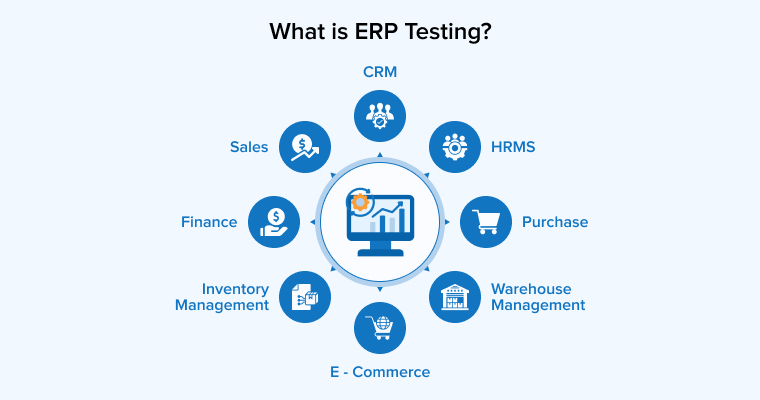
ERP testing involves performing manual or automated tests on ERP systems to assess their functionality before release to the live environment. Unlike traditional web application testing, ERP testing requires domain knowledge of multiple subsystems such as supply chain, finance, and human resources. As it combines business processes and workflows from different domains, it’s a specialized test that checks the performance and functioning of all components according to the company’s requirements and expected outcomes. A glitch in any components can disrupt the entire ERP system if it goes unnoticed.
1.1 Benefits of ERP Testing
ERP testing is a critical step in the ERP implementation plan. A lack of proper testing can cause significant business losses and ultimately compromise operational efficiency. Among its many benefits, the following four are the most important:
1. Identifying Defects and Risks
Bugs or errors can lead to system failures, data loss, security breaches, and more. They prevent users or employees from using the system efficiently, thereby reducing productivity. ERP testing, especially automated ERP testing for repetitive scenarios, can help uncover these defects in advance, preventing costly system downtime and the need for reactive measures.
2. Increased Business Performance
Identification and resolution of performance bottlenecks increase overall workflow efficiency, especially when managing user requests during peak traffic. They help achieve optimal results and ensure smooth integration across departments.
3. Boosts User Satisfaction
It becomes frustrating, especially for new users, when the system does not respond properly or the server frequently goes down. This obstructs the onboarding process for new employees. Usability and user acceptance testing of ERP systems ensure the system is intuitive, user-friendly, and meets stakeholder requirements. This increases user adoption and improves the ERP’s return on investment(ROI).
4. Ensures System Reliability
Testing before the errors impact system operations minimizes potential risks and increases the accuracy rate. Different tests, like security testing, integration testing, and performance testing, make the system more robust and improve its long-term stability and reliability.
1.2 ERP Testing Process

We know that ERP testing is complex because it requires validating different components and then the system as a whole. ERP systems need repeated testing since they interact with many applications across the organization. Therefore, a structured testing approach is necessary to meet both operational requirements and business objectives.
Now, there is no standard process for ERP testing, since every ERP system varies in features, deployment, size, industry, and other factors. However, every testing process includes the following five fundamental processes for ERP testing:
1. Planning Phase
The planning stage is the founding pillar of the entire testing process. In this stage, team members decide the testing goals and scope, select testing techniques, and identify the features and components to be tested. They also determine resource requirements, the test timeline, testing parameters, success criteria, and any organization-specific regulatory or compliance requirements. After these prerequisites have been thoroughly analyzed, a detailed test plan is prepared and shared with all the concerned stakeholders to ensure the testing effort aligns with project goals.
2. Preparation Phase
Once the test plan is verified and finalized, it’s time to design test cases, set up the test environment, define test data, write test scripts, select testing tools, testers, and their responsibilities.
The test cases must be prepared according to predefined requirements and must cover all possible scenarios with their expected outputs to ensure comprehensive coverage. Use tools such as JIRA or TestRail to manage and track test cases. Configure the test environment so it closely matches the production environment where the ERP system will be deployed. The test data should mimic real-world scenarios to provide accurate insights.
3. Execution Phase
This is the actual testing phase, during which testers execute automated or manual test cases according to the test plan. Test outcomes are documented, and reported defects are classified by severity. The resolution of logged bugs and errors is tracked. The test data has been modified or recreated to fix the defects, and a retest is carried out to verify the resolutions. Care must be taken that the corrections do not affect other parts of the system. Therefore, perform extensive regression testing to ensure no new issues have emerged.
4. Evaluation Phase
The evaluation phase of testing determines the readiness of the ERP system for deployment to the live environment and identifies required developments after release. The test results are analyzed against the test objectives to assess overall system quality. Lessons learned from the testing process are documented for future reference.
5. Maintenance Phase
The ERP system requires continuous monitoring and improvement post-deployment to ensure efficient operation. System performance reviews should be conducted periodically to address issues and identify areas for improvement. The testing and development teams must use appropriate tools to assess and improve metrics such as the number of production defects, test data coverage, and automation coverage. User and stakeholder feedback should be collected to guide application refinement, updates, and upgrades.
2. Types of ERP Testing
An ERP system undergoes different types of testing, with each test focusing on a different aspect of the system to ensure comprehensive coverage. If you want your system to be stable and reliable, you cannot skip any of the tests listed below:
2.1 Functional Testing
Functional tests are designed based on an ERP system’s functional requirements and the organization’s specific needs. They verify that each component, module, or feature performs its intended functions. Functional testing assesses the system’s behavior under various scenarios to determine whether it satisfies organizational requirements. It checks not only features and components, but also the hardware and software that support the ERP application.
Functional testing includes multiple types of testing:
- Unit Testing: It checks the functionality of individual units of the system independently.
- Integration Testing: Individual units are combined to verify their interactions and the correctness of data flow between them.
- User Acceptance Testing: It is performed by end users or stakeholders to verify that the system meets its requirements.
- API Testing: Verifies whether APIs correctly handle requests and responses.
- System Testing: The entire ERP system is tested as a whole to verify that it complies with expected functionality.
Here is what a Reddit user say’s about Functional testing.
Comment
byu/ocnarf from discussion
insoftwaretesting
2.2 Performance Testing
Performance testing evaluates an ERP system’s speed, scalability, stability, reliability, and ability to handle both normal and massive workloads. Parameters such as throughput, response time, transaction per second (TPS), and resource utilization are measured to assess the system’s robustness. This helps the testing team measure and optimize the ERP system’s performance under all relevant conditions.
Let’see what a Quora user say’s about Performance testing.

2.3 Security Testing
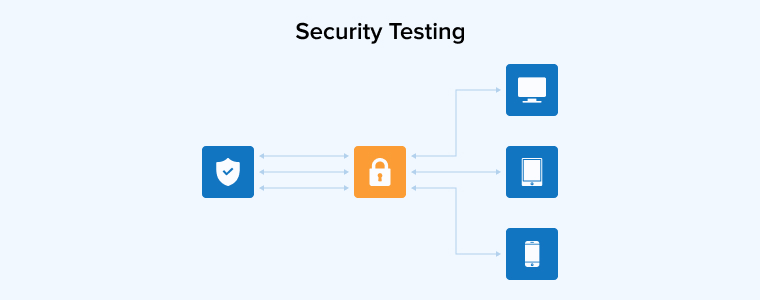
An ERP system is a centralized data storage solution that contains employee data, various operations, financial information of customers, suppliers, and much more. Therefore, it is essential to ensure the confidentiality of all sensitive information. Security testing examines a system to uncover vulnerabilities and threats such as unauthorized access, weak encryption, API flaws, misconfigurations, and broken authentication and authorization. Using various testing tools and frameworks, security testing verifies that only authorized individuals can access sensitive data.
2.4 Stress Testing
Stress testing identifies a system’s breaking point under extreme load. It measures how well the system handles errors, manages failures, and maintains functionality when pushed to its limits. Stress tests are typically conducted in controlled environments that mimic extreme conditions. During testing, the system’s behavior is closely monitored, and performance metrics are analyzed to identify issues.
Let’see what a Quora user say’s about Stress Testing.
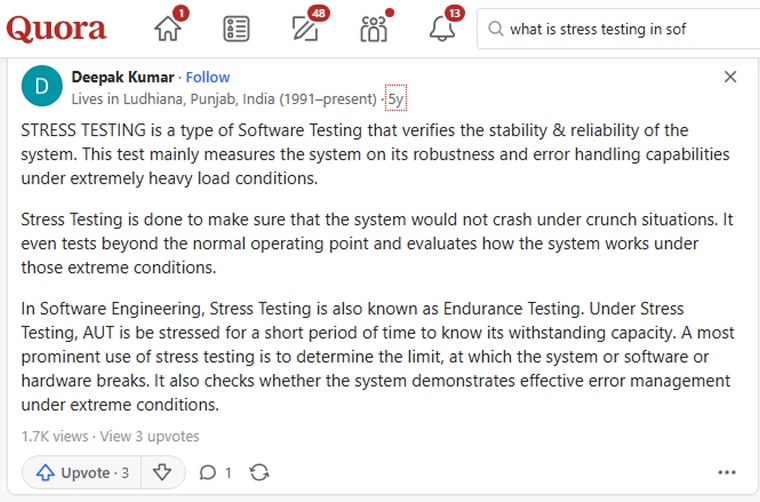
2.5 Regression Testing
The changes made to fix the errors can affect existing ERP functionality or performance. Therefore, predefined test cases are repeatedly run to verify the same functionality after every update or change. If these test cases pass after the changes, it indicates that the existing functionality still works correctly.
Here is what a Reddit user’s says about Regression testing.
Comment
byu/mikosullivan from discussion
insoftwaretesting
3. Challenges in ERP Testing
The size and complexity of ERP systems make it difficult to test every aspect. Problems encountered during ERP testing can differ from those faced during implementation. Some of the most common issues developers encounter during ERP testing are:
3.1 Resource Limitations
ERP testing is a resource-intensive process that requires sufficient time, qualified developers and testers, appropriate equipment, a somewhat larger budget, and proper project management. Lack of any of these can lead to missed timelines, budget overruns, and performance bottlenecks, reducing the system’s operational efficiency. To avoid such situations, advanced planning and proper resource allocation are necessary.
3.2 Poor Project Management
ERP testing covers multiple domains; hence, proper test planning is mandatory. Testing proceeds in multiple iterations and requires continuous collaboration and coordination among all teams, stakeholders, and users. There can be misunderstandings due to a communication gap, resulting in delayed resolutions, overlooked critical test parameters, inaccurate data migration, and other issues.
3.3 Integration with Other Systems
ERP systems need to communicate with different systems and third-party applications that have different data formats and structures. The organizations with legacy systems require their ERP to work along with those systems. Smooth integration with these systems can be challenging to establish and test. Compatibility issues may arise from outdated technologies, lack of proper documentation, complex dependency management, and other factors. The risk of data inconsistency and security vulnerabilities increases.
3.4 Test Environment Complexity
Setting up a realistic test environment requires substantial resources, including specialized tools, realistic test data, software licenses, and more. ERP systems are often customized to meet specific business needs. Reproducing those customizations and configurations accurately in the test environment can be time-consuming and error-prone.
3.5 Domain Knowledge
The interconnected nature of ERP systems makes it essential for the project team to possess domain knowledge of all the components of an ERP system. Domain knowledge enables the creation of precise and relevant test cases, including both positive and negative scenarios, that accurately simulate real-world usage and potential errors. With domain expertise, testers can effectively validate whether the ERP system meets business requirements and user expectations.
4. Best Practices for ERP Testing
The following best practices will guide you in performing ERP testing effectively and obtaining optimal test results.
4.1 Defining Testing Parameters
Testing parameters within ERP systems is crucial for ensuring the system’s effectiveness and alignment with business goals. A robust ERP testing strategy is built on a deep understanding of the organization’s existing business processes and integrations. By carefully examining these elements, organizations can accurately define what needs testing and why, preventing both over-testing and under-testing.
This in-depth analysis of current workflows and how different systems interact allows for the creation of a targeted testing approach. This proactive approach ensures that the ERP system effectively supports operational needs and aligns with the organization’s strategic vision.
4.2 Define Your Testing Goals
Before testing an ERP system, defining clear goals is the top priority for a successful outcome. This includes specifying which features, functions, or modules require thorough testing. The primary aims are to ensure the ERP system meets business requirements, optimizes functionality, improves performance, and enables seamless integration with other systems.
Establishing measurable expected outcomes and benefits is crucial because it enables effective monitoring and measurement of testing performance. This includes defining test coverage metrics to quantify testing performance and ensure comprehensive validation of critical areas. By clearly outlining goals and success indicators, organizations can create a robust, aligned testing plan that minimizes risks and ensures the ERP system meets business needs at deployment.
4.3 Design and Prioritize the Test Cases and Scenarios
Design comprehensive test cases that mirror real-world end-to-end business processes. Document detailed steps, inputs, expected results, and pass/fail criteria for each scenario. Include both expected and error-handling scenarios to ensure a thorough assessment of system functionality and robustness. Use realistic test data that reflects diverse business conditions.
Prioritize the created test cases based on risk and business criticality. Focus on high-impact areas, including core business processes, complex features, and modules with a history of defects or frequent changes. Consider factors such as the likelihood of failure, the severity of potential defects, and how often users interact with each feature.
This approach ensures that the most critical areas receive thorough testing, optimizes resource allocation, and maximizes fault detection. You should regularly review and adjust priorities as the project evolves.
4.4 Through Documentation
In ERP testing, thorough documentation is essential for ensuring a successful implementation and avoiding future issues. It improves transparency, accountability, and a shared understanding among the teams involved, ultimately leading to smoother operations. Test objectives, test cases, expected results, actual outcomes, and other relevant information must be well-maintained.
Automated documentation tools are highly recommended for their accuracy and compliance. They streamline the documentation process and enable real-time capture of changes and results. As a result, the project team can create a valuable learning resource, minimize oversights, maintain accountability, and ultimately improve the overall quality and reliability of the ERP system.
4.5 Data Management Strategies
Test data management plays an important role in ERP testing. The test plan must clearly outline data sources, the types of data needed, data preparation methods, and how data will be managed throughout the testing lifecycle. Protect sensitive information by masking or anonymizing production data when it is used for testing, ensuring compliance with data privacy regulations. Various automation tools can generate, mask, refresh, and maintain test data, improving efficiency and reducing manual effort.
5. Final Thoughts
ERP systems have become essential for every business today. However, because implementation is complex, many organizations struggle to realize the full benefits. It requires a significant effort and investment to customize and test the customized system to ensure its effective working. The above blog will help you ease this unmanageable process and take the best out of it.


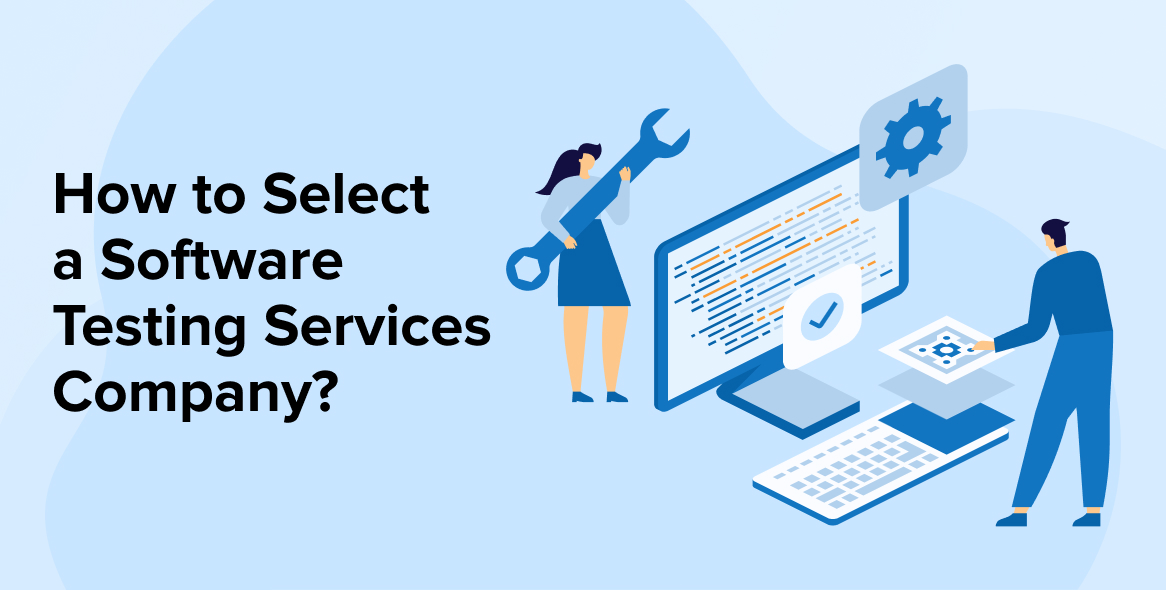

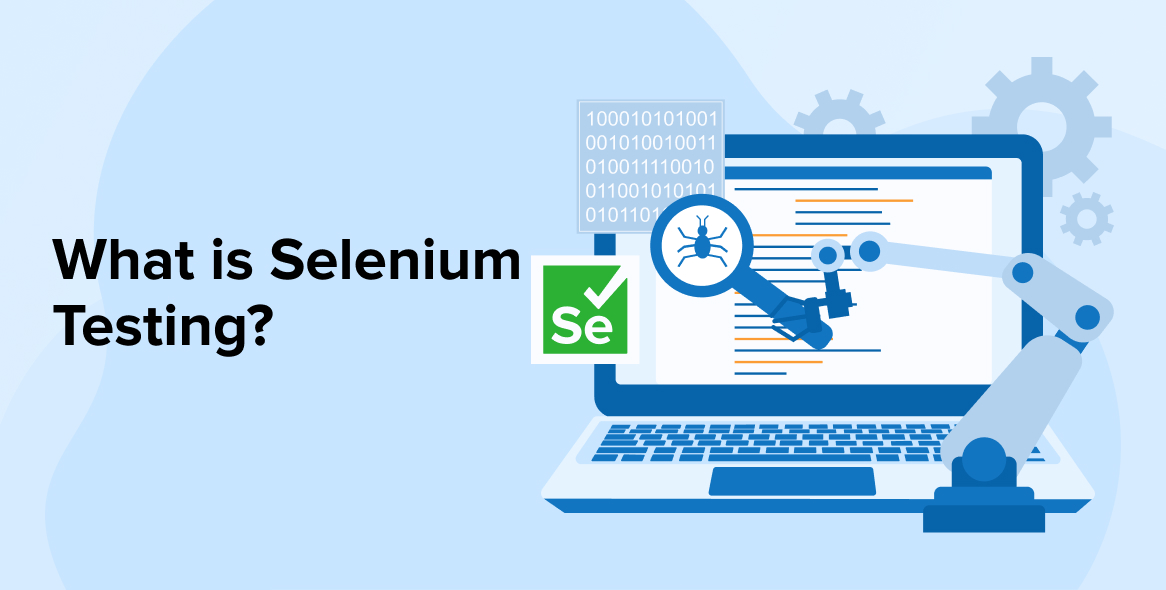

Comments
Leave a message...